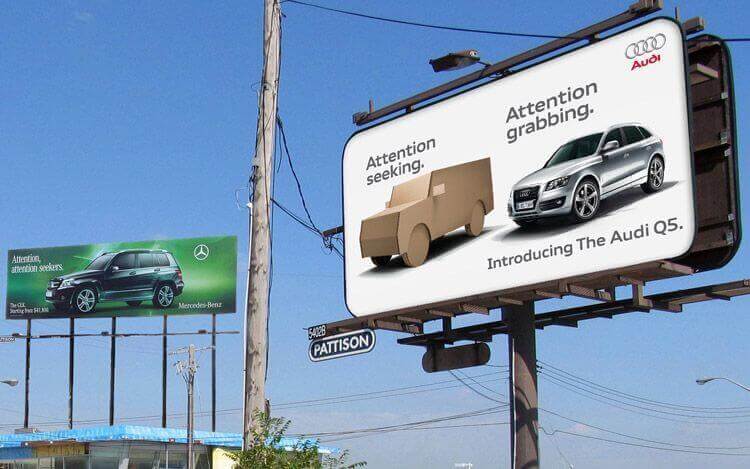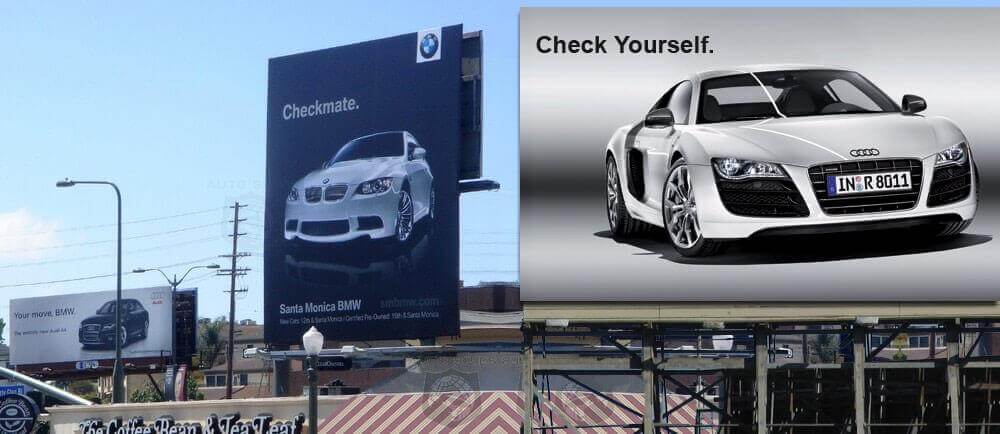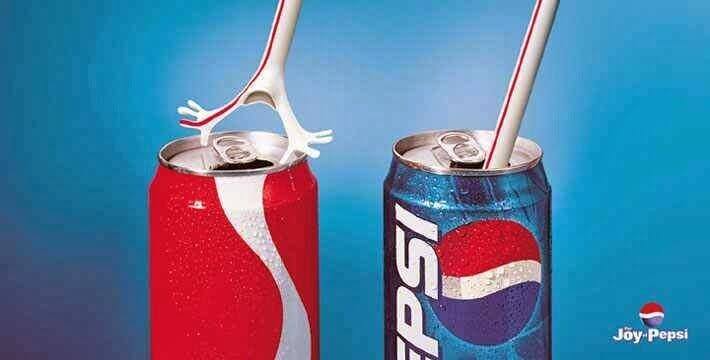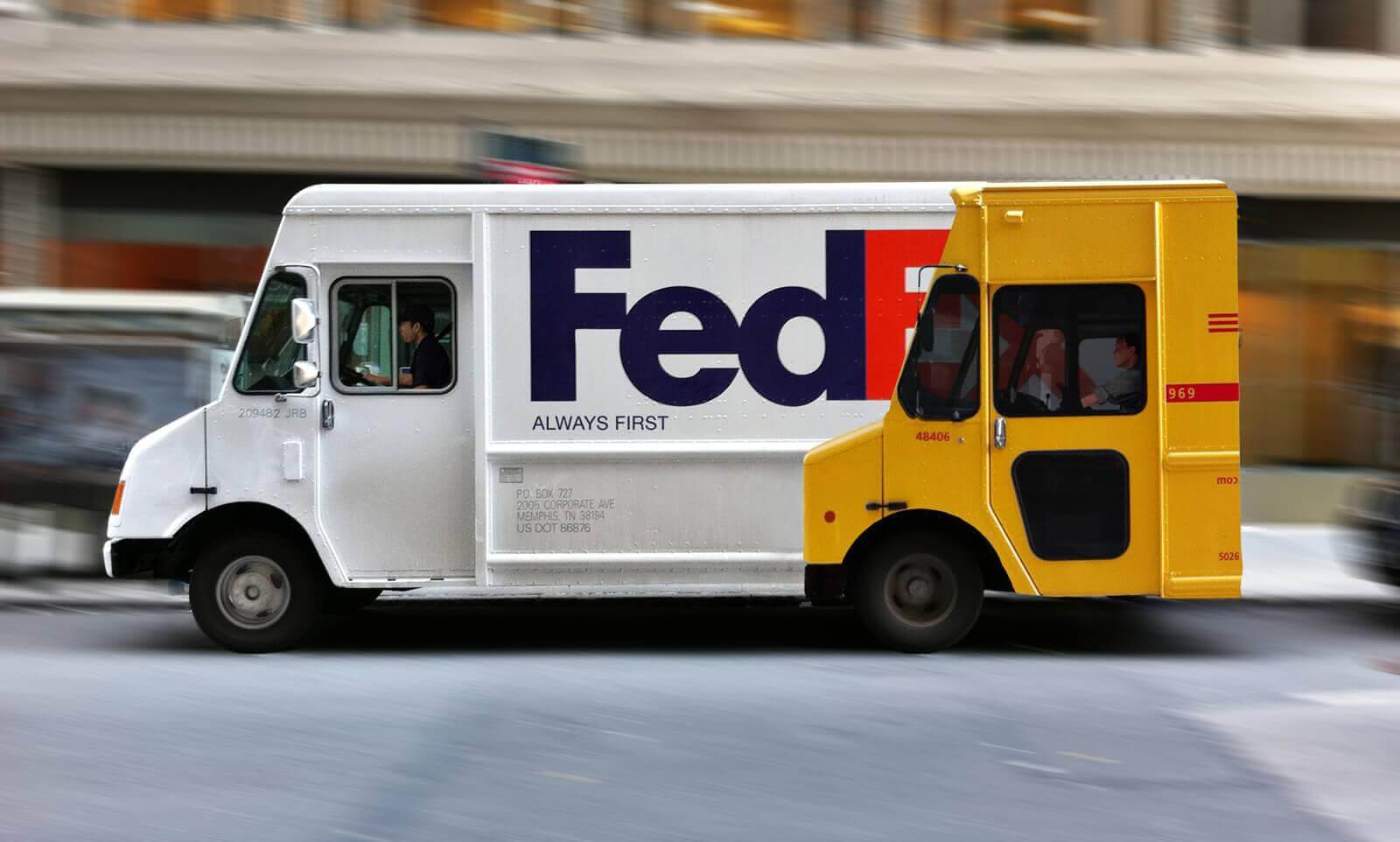
Call it schoolyard bully behaviour, but in advertising, the best way to make your brand look good sometimes is to put another one down. In other words, you need to wage a full-out brand war. It may seem like poor taste, but highlighting another company’s weakness can make yours look superior (as long as it’s done tastefully).
But the question is how far is too far, and conversely, how weak is too weak? Throwing yourself into a full out brand war takes a delicate balance of guts and grace. Fortunately, there are ways you can incorporate a head-to-head brand positioning strategy without looking like the loser of an ad war.
When Big Brands Duked It Out…
If you need some gusto to even think of “calling out” another brand, there are some notable examples to help you muster up a competitive spirit. Several companies over the years have decided to poke fun at their competition – and it has worked.
BMW vs Audi
Both BMW & Audi engaged in head to head brand positioning.
BMW and Audi have taken shots at each for some time now, with both using a humorous and cheeky slant. Their most notable campaign has incorporated the use of billboard ads.
Coke vs Pepsi
Coke and Pepsi have used head to head brand positioning for years.
Coke and Pepsi have battled each other for decades now in the hopes of winning over youthful audiences. They’ve typically done so with fresh and funny imagery to show their respective brand ethos.
FedEx vs DHL
FedEx and DHL too have dived into head to head brand positioning.
FedEx and DHL have both been around the block plenty of times (excuse the pun), and they’ve both taken shots at each other in terms of who’s the fastest. In this war, the claims are direct and straightforward.
Keys To Consider Before Challenging Another Brand Head On
The three examples of head to head brand positioning above are great examples of guts mixed with grace. They’re bold and pull no punches – each ad clearly references the competition in a way that would undoubtedly trigger a reaction from viewers (i.e. laugh, smile).
Yet still, there is nothing taboo about these ads – no one would get offended by the copy, imagery or overall thematic elements of these executions unless they have very very thin skin.
And that’s the key factor to keep in mind if you decide to rollout a head to head brand positioning strategy. It’s much like a boxing match: you want to hit your opponents where it hurts, but you won’t hit them in areas that would get you disqualified.
And in the world of head to head advertising, getting disqualified could mean negative publicity, consumer activism and even legal battles – all of which would hurt your reputation and business.
Keys To a Launching a Successful Brand War
- Know your audience (some may not buy from a brand that attacks others)
- Name drop or depict your competitor (after all, it’s war)
- Keep the copy and imagery light-hearted
- Respond directly to their mockery or jab with a related but stronger jab
- Avoid NSFW, offensive and taboo content – keep it clean
Is Head-to-Head Brand Positioning Right For You?
The thought of a brand war may sound fun, but that doesn’t mean you should just throw yourself into one. A head-to-head brand positioning approach is a dicey proposition in the sense that it will either work for you or backfire completely.
Keep in mind too, that the decision to subtweet or “roast” another brand depends much on your place within the market. And that alone can determine if your company is ready to take such an approach. So before going the head to head route, consider the following factors.
- Age – More established brands with sizeable audiences and market reach have more clout, and can therefore flex their dominance.
- Persona – A brand that has a more bold, satirical or even condescending persona can easily engage themselves in a war, as opposed to a more reserved or friendly-toned brand.
- USPs – It’s been said that the USP is dead, but if your brand thrives because of one, then you can flaunt it by depicting its power over the competition.
- Industry – B2C industries, especially those in the fashion, consumer goods, retail, automotive and technology realms can get away with throwing jabs at each other. But a head-to-head positioning in sectors such as non-profit, healthcare, and human rights would simply feel out of place.
Make sure to give consideration to these factors when deciding whether you will take the head to head route or not.
If You Can Walk the Walk, Then Talk the Talk
A little competition never hurt anyone, especially when it comes to marketing. In fact, that’s what it’s all about. The only difference with head to head brand positioning is that you’re directly attacking another brand.
With that said, a direct “attack” shouldn’t involve any messaging or imagery that would damage your reputation or offend an audience. It’s simply a playful jab that teases the competitor and delights the audience. After all, the winner is never crudest, but rather, the one who simply presents their point the best.





